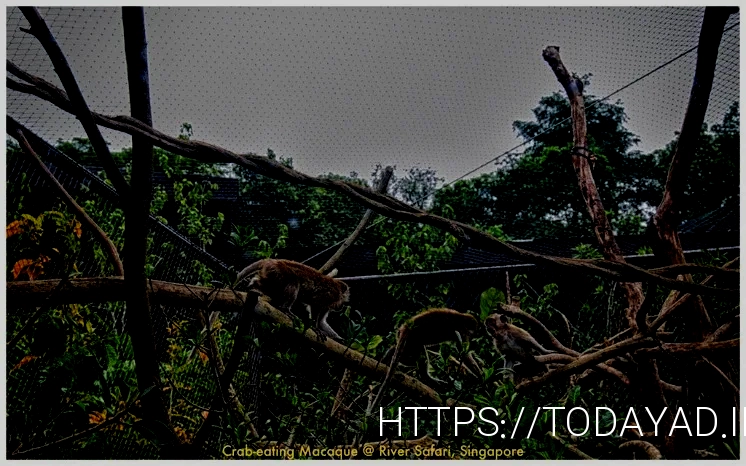What Does a Beaver Eat?
However, they can eat whenever they want when spending time inside the lodge. As I have already mentioned, beavers are herbivores and never eat meat and fish. Beavers are not terribly picky; they eat lots of different foods based on what’s available to them.
Other plants will provide their energy levels and maintain their body weight. At one point beavers were greatly threatened due to trapping. After wildlife laws were established, beavers and their habitats became more protected, and their numbers rebounded. After extinction in Scotland about 400 years ago, this beaver type was introduced from Norway and formally recognized as a native species. Interestingly, this animal was widely distributed in Great Britain in the past, but none was found in Ireland.
They prefer the bark and leaves of certain trees, but they also enjoy soft-fiber plants as well. They instead will build dens in high banks, with underwater entrances. Beavers have interesting ways to communicate, such as the tail slap on the water for warning others. The scent from their castor glands also allows beavers to communicate information when the animals rub the scent on mounds near their homes. Introduced to an area without its natural predators, as in Tierra del Fuego, beavers have flooded thousands of acres of land and are considered a plague.
She spent nine years working in laboratory and clinical research. A lifelong writer, Dianne is also a content manager and science fiction and fantasy novelist. Dianne features science as well as writing topics on her website, jdiannedotson.com.
That said, there are rare occasions when beavers pose a threat to the local fish population. Beavers also get small amounts of water from eating fruit, leaves, or anything that has recently been rained on. Gnawing on wet wood may also supply them with small fractions of their daily water intake. Beavers have dexterous front feet that can hold objects, much as a person would, although they do not have opposable thumbs.
Beavers enjoy eating leaves, twigs, and bark from various deciduous trees, especially aspen and poplar. They also like soft plant foods such as clover, cattails, shrubs, apples, and even beans and corn. Beavers are hunted by most large carnivorous animals, though the exact predators they face will vary depending on the region they live in. As the wetland fills up with plant debris and dries out, pasture species colonize it and the wetland may eventually become a meadow suitable for grazing in a previously forested area.
In most cases, they do it every few years, which is actually excellent for both these animals and the environment. Berries – Beavers won’t happily eat most berry plants from wetland and blackberry canes. Unlike other rodents, beavers are picky eaters with a specific taste for food. They never eat dirt and soil or steal garbage from someone’s trash can.
These nutrients help feed the juveniles after the yolk sac has been digested. Finally, beaver dams keep the water clear which favours all salmonoids. The hope is that beavers who wander by or are brought in will choose to live there and take over construction and maintenance of the dam. Historically, beavers have been hunted for their fur, meat, and castoreum.
Beavers are then likely to recolonize the area, and the cycle begins again. When a beaver dam bursts, the resulting flash flood may overwhelm a culvert. What happens if the water level rises too far in winter and the lodge gets flooded?
The beaver’s disruption is not limited to human geography; beavers can destroy nesting habitat for endangered species. Traditional solutions to beaver problems have been focused on the trapping and removal of all the beavers in the area. Of course, beavers may consume small amounts of wood when they eat bark and twigs off trees.
However, generally, only one family of beavers live in one area (they’ll even fight other families that wander into their territory). However, beavers that live in regions with moderate climates often don’t need to store food. Fish and meat – Never expect beavers to consume fish, meat, and meat products. These animals are herbivores (strict vegetarians), so you will never see any of them eat such food. Thanks to specific microorganisms in their cecum, beavers have a unique ability to digest cellulose. While other mammals can’t decompose this nutrient at all, these rodents can digest about 30% of consumed cellulose.
If you have ever wished you had more hours in a day, you might envy beavers. While humans operate on a 24-hour day length, generally nocturnal beavers do not. They live primarily under water in low light in their lodges, which changes their natural circadian rhythms. Therefore the length of a beaver day tends to range from 26 to 29 hours. Beavers stand apart from other large aquatic rodents such as the muskrat and the nutria.
Muskrats have long, flattened tails and are smaller than beavers. Nutria tails are roundish, and they tend to be in between a muskrat and beaver in size. Agriculture introduces herbicides and pesticides into streams.

Large birds of prey have been known to take juvenile beavers. “This is why if you’re lucky enough to see any signs of beavers – think chewed timber – you should be very quiet and move very slowly,” says Brazier. Lodges in the UK can be a whole 10m across, requiring dams around 100m in width. The world’s biggest dam – discovered in Alberta, Canada – measures a massive 500m in length and could get several hundred meters longer if it connects with nearby dams in future. Contrary to myth, however, it can’t actually be seen from space. Leftovers – Beavers are not omnivores and will never eat leftovers from your meal.

The truth is, beavers don’t eat the wood itself; they eat a substance on the surface of the wood called cambium. Cambium produces a covering layer on the wood from which new wood and bark grow. Native Americans respected these ‘little people’ because they managed to alter local habitats to fulfill their needs. You have probably known that these semiaquatic animals can move on the land and water equally, but let’s see what do beavers eat.
Some of these toxicants are metabolized and decomposed by the bacteria in the cellulose-rich bottom of a beaver dam. Like most night-time animals, this behaviour helps them avoid predators. However, with most of their predators now extinct in the UK, resident beavers are only truly nocturnal out of habit. Interestingly, one dam can host generations of beavers, with lodges standing as long as beavers are active in the region. For example, although beavers live for eight years on average, it’s believed the aforementioned dam in Alberta was first constructed in 1970. There’s no set number – a dam and lodge could hold anything from a pair of beavers to 10.
Besides silt, the beaver dam collects twigs and branches from the beavers’ activity as well as leaves, notably in the autumn. The main component of this material is cellulose, a polymer of β-glucose monomers. Just as algae receive energy from sunlight, these bacteria derive energy from cellulose, and form the base of a very similar food chain. Despite living in and around water, where fish would likely be a plentiful source of food, beavers don’t eat fish. They are herbivores, preferring a wide variety of plant foods over other types of animals, including fish.
Their used trees also provide nesting habitat for herons and other birds. Beavers choose dam locations based on the sound of flowing water. They make watertight dams that drastically alter aquatic bodies such as rivers and streams and ponds. Beavers take sticks, reeds, saplings and branches, and they use mud as a caulking material to build their dams.

After their first year, the young help their parents repair dams and lodges; older siblings may also help raise newly-born offspring. Beavers hold territories and mark them using scent mounds made of mud, debris, and castoreum—a liquid substance excreted through the beaver’s urethra-based castor sacs. Beavers can also recognize their kin by their anal Doeat.top What do elephants eat gland secretions and are more likely to tolerate them as neighbors. They are famous for building dams and lodges in aquatic areas. If you have ever wondered what beavers eat and thought only “trees,” you would be partially correct. However, beavers eat a variety of plants and have ingenious ways to make sure there is food available all year long.
Precisely, they only consume some tree parts, preferably the cambium, the soft inner bark. Beavers are nocturnal animals and usually look for food at night. In any case, they spend most of the day eating and building dams. The dams are not the homes of beavers; they build lodges to live in, give birth, raise young and store food. These cleverly engineered lodges can be over 6 feet high and as wide as almost 40 feet! The lodge contains an entrance underwater that the beavers can access quickly, and climb through their passages to various rooms.
Beavers are essentially large rodents; they are the hunted, not the hunters. They have plenty of natural predators in the wild, including bears, wolves, wolverines, alligators, coyotes, and even hawks. Beavers maintain and repair their lodges and dams constantly to keep them safe and sound for every season. Richard Brazier is a professor of physical geography at the University of Exeter.
How beavers eat and how they engineer their surroundings play a role in their importance to the environment. Beaver ponds can cause the removal of nutrients from the stream flow. Farming along the banks of rivers often increases the loads of phosphates, nitrates and other nutrients, which can cause eutrophication and may contaminate drinking water.
Interestingly, while these structures guard beavers against large predators in other parts of the world, they’re often not put to the test in the UK. As I have already mentioned, you can recognize two beavers types with similar eating habits. You should not rely on any information contained on this website, and you use the website at your own risk. We try to help our visitors better understand forest habitats; however, the content on this blog is not a substitute for expert guidance. Beavers can run on land, but that is not their greatest skill.

